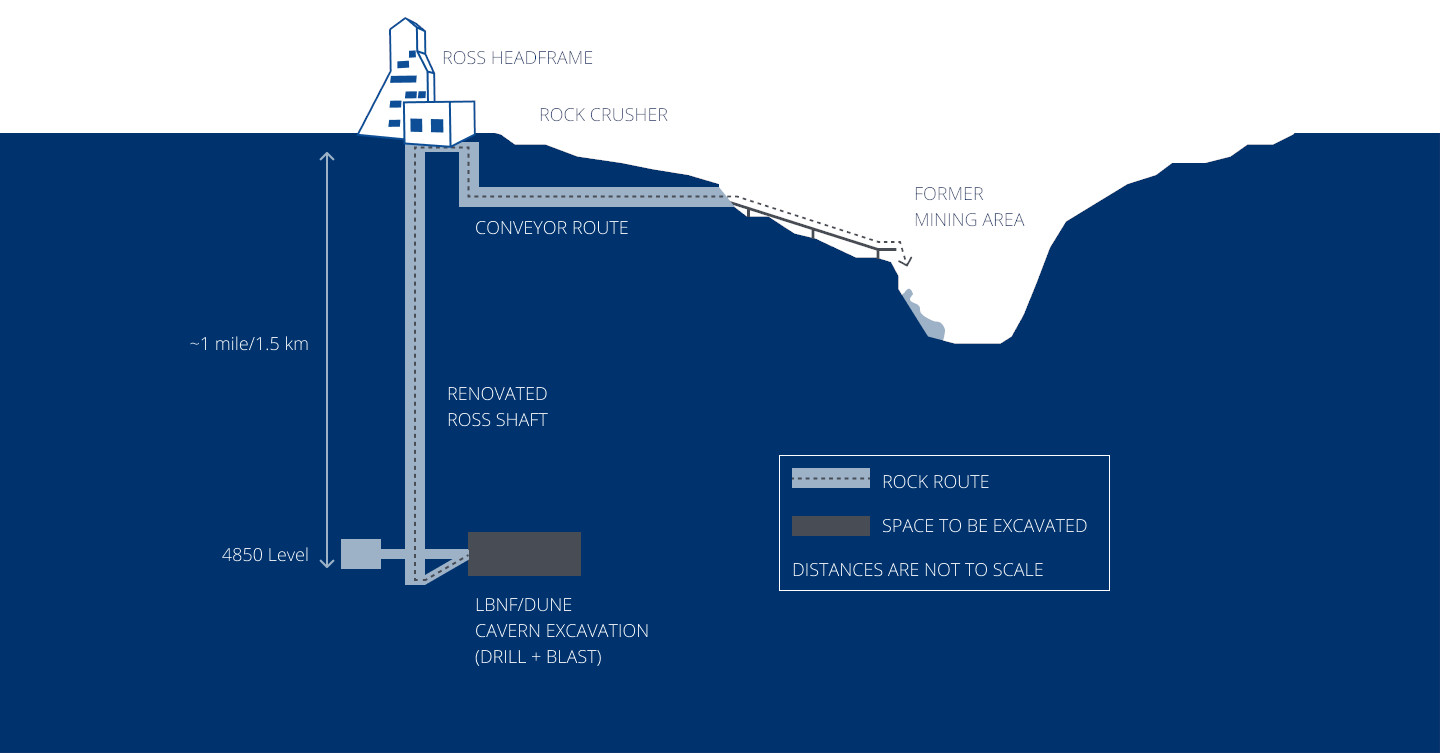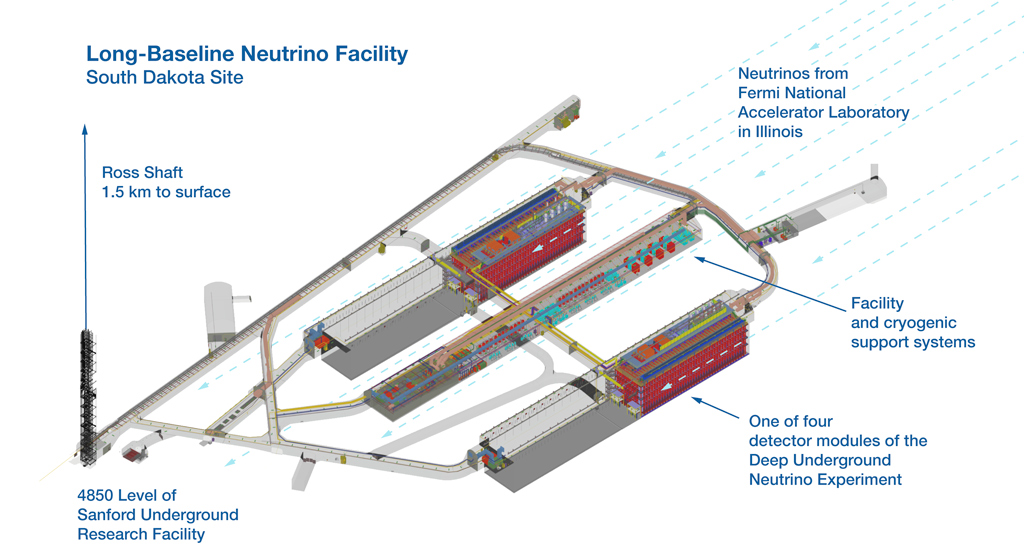DUNE’s world-class science will require facilities at both the near site at Fermilab and the far site at Sanford Lab. This includes custom buildings, structures and space to house the experimental equipment, as well as the infrastructure and utilities that support the experiment’s construction, installation and operation.
Near site construction at Fermilab
At Fermilab, LBNF will construct a series of underground enclosures and surface buildings for the new beamline, as well as an 18-meter-high (60-foot-tall) hill that will slope the beamline on the correct angle to send neutrinos toward South Dakota. This series of structures will start where the proton beam is extracted from the Main Injector particle accelerator and extend past the target hall to where the neutrinos are born.
LBNF will also prepare facilities for the moderately sized DUNE near detector that sits in the path of the neutrino beam within the Fermilab site. LBNF will excavate and outfit a detector hall and support rooms 60 meters (200 feet) below ground, with two shafts connecting the underground area to a service building on the surface. There, teams will receive components, work on assembly and transport materials underground to complete installation.

Excavation of LBNF caverns for DUNE
At the far site in South Dakota, LBNF is preparing the site for the excavation of about 800,000 tons of rock to create space for the four DUNE far detector modules and the necessary utilities underground. Rock will travel up the renovated mile-deep shaft at Sanford Lab, then along an aboveground three-quarter-mile-long conveyor to a large former mining area called the Open Cut, located in Lead, South Dakota. LBNF will carve out three long caverns; two of them will contain two far detector modules each, placed end to end, while the third will house cryogenics equipment and other utilities that keep the powerful detectors running.
Excavation work at the far site began in early 2019.


